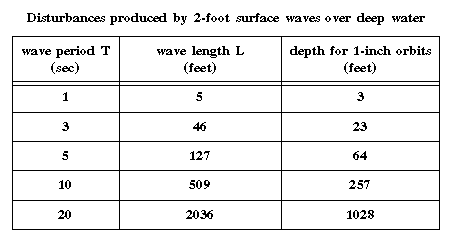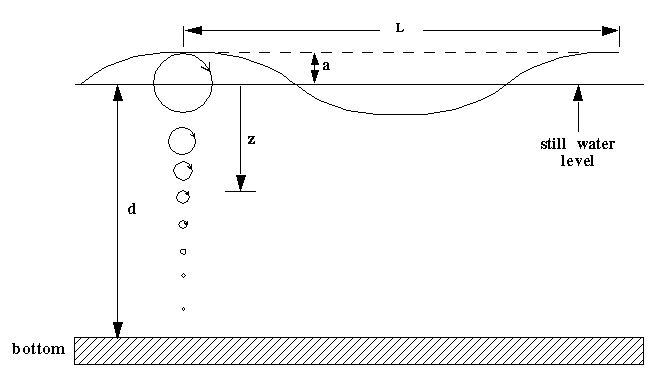The wave length of a deep-water wave depends only on its period T and the acceleration
due to gravity g:

The wave period is simply the time between consecutive wave crests as they pass a fixed
point. All deep-water waves with the same period, regardless of actual depth, have the
same wave length.
Let's see what happens for 2-foot waves (a=1 foot) with various periods. In particular,
let's see how deep you must go before the orbit radii of small bits of floating debris
become smaller than 1 inch, which implies an overall particle displacement of less than
2 inches. The results are presented in the following table.

For example, 2 foot waves 3 seconds apart produce a 2-inch particle displacent at 23 feet
below the surface. As is clear from Equation 1, the longer the wave length the less rapid
the vertical attenuation of the surface disturbances.
REFERENCES:
Robert M. Sorensen, "Basic Wave Mechanics for Coastal and Ocean Engineers" (John Wiley & Sons, 1993), Chapter 2..
Last Modified: 11:15pm , May 06, 1997




